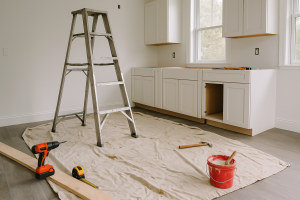The Pyrite Problem
We’ve all heard about the “Pyrite Problem” when participating in the Montreal real estate market. While our market is booming, it can seem that pyrite is booming right alongside it. Though pyrite may sound like a scary and unknown substance, you’ve probably even seen it before – fool’s gold. This shiny and innocent looking substance can prove to wreak serious havoc on houses.
What is Pyrite?
Pyrite is a natural mineral that can be found in the backfill material of construction (the material under garages and basements). When it comes into contact with moisture and oxidizes, it makes the concrete swell and can cause the concrete to crumble or crack.
What Can the Damage be Like?
Pyrite causes progressive damage on a property. Yet, issues caused by pyrite can take ten years or longer to show up. Damage can be completely undetectable, and the owners of the property would have no idea of the problem. There can also be severe damage such as giant cracks in cement, which are generally the worst in garages
In What Kind of Properties is it Found?
Houses built between 1970 and 1995 are the houses at risk for this problem. Many quarries had large quantities of pyrite, some of them located on the South Shore and in the east end of Montreal. We are mostly seeing pyrite show up in properties in the South Shore, in DDO and in some other areas of the West Island.
How do I Check if I Have Pyrite?
There is standard testing for the presence of pyrite. When you are buying a house and the inspector notices some of the warning signs, such as star-shaped cracks, they may suggest that you invest in one of these tests. The test takes carrot samples of the backfill, which they then analyze in a lab. The results will tell you the quality of your backfill material, based on a range:
0 to 10: Negligible risk of damage
11 to 20: Low risk of damage
21 to 40: Low to moderate risk
41 to 60: Moderate to high risk
61 to 80: High risk
81 to 100: Very high risk
How can I Tackle This Problem?
It can be very upsetting to have it confirmed that your house or the house you are interested in has a pyrite problem. Of course, once pyrite is officially detected in a home, the homeowners are under legal obligation to disclose this fact when putting it on the market. Since pyrite can depreciate the value of your property when selling, many people seek to address the issue before putting it on the market. Or, if you are interested in doing a renovation, it is important to deal with this problem beforehand, as pyrite damage will simply continue to progress.
If your test comes back with a high damage risk and you seek to tackle the problem, you will need to get in touch with a foundation expert or contractor. Unfortunately, a pyrite problem means having to completely replace the contaminated backfill in your foundation. These professionals will provide you with a report that details the work to be done and its cost. Replacing the backfill is a permanent solution, which will erase all damage and the possibility of the progression of damage. Of course, it is also an expensive solution, and the price will vary depending on how much needs to be replaced.
We hope that this blog answers some questions you may have about the mineral when buying or selling your home. Please do keep in mind that we are not experts in this field, and that it’s always important to talk to a home inspector or general contractor, who will be able to give you more in-depth information and advice. It would be our pleasure to help you find someone! We at Team Langtry always have our clients’ backs to make sure that these big decisions and the solutions to life challenges are always in their best interest.
If you have any questions and would like to learn more about the current real estate market, you can reach us anytime at:
514-781-2121
info@angelalangtry.ca



